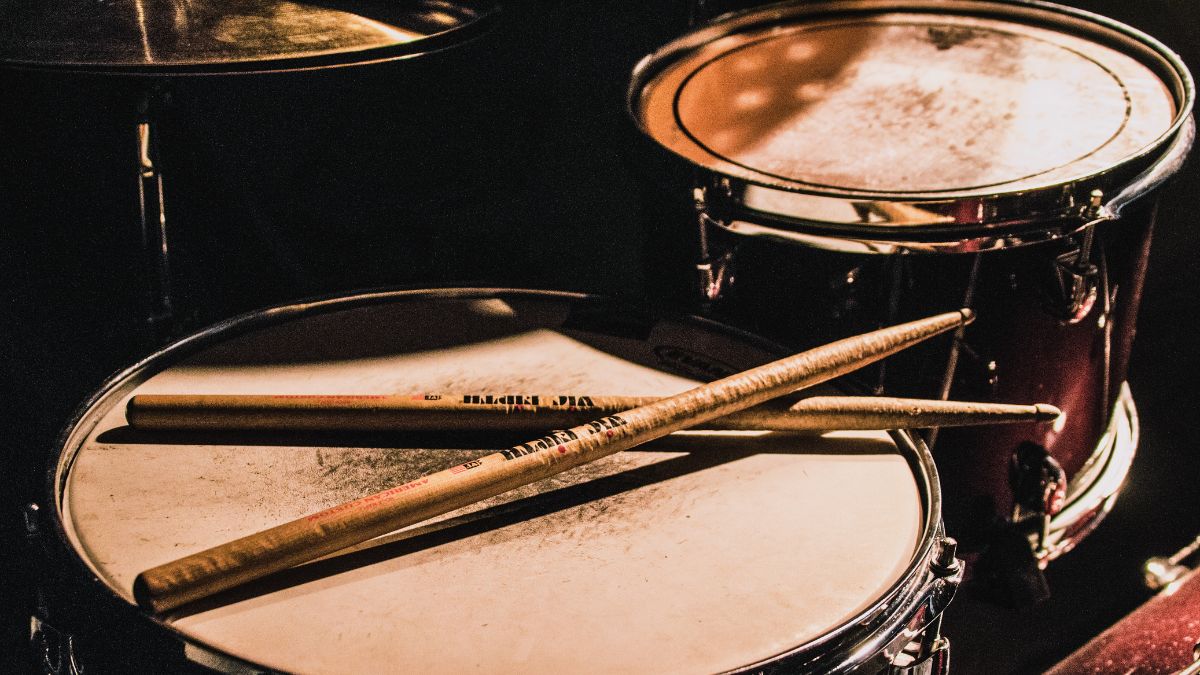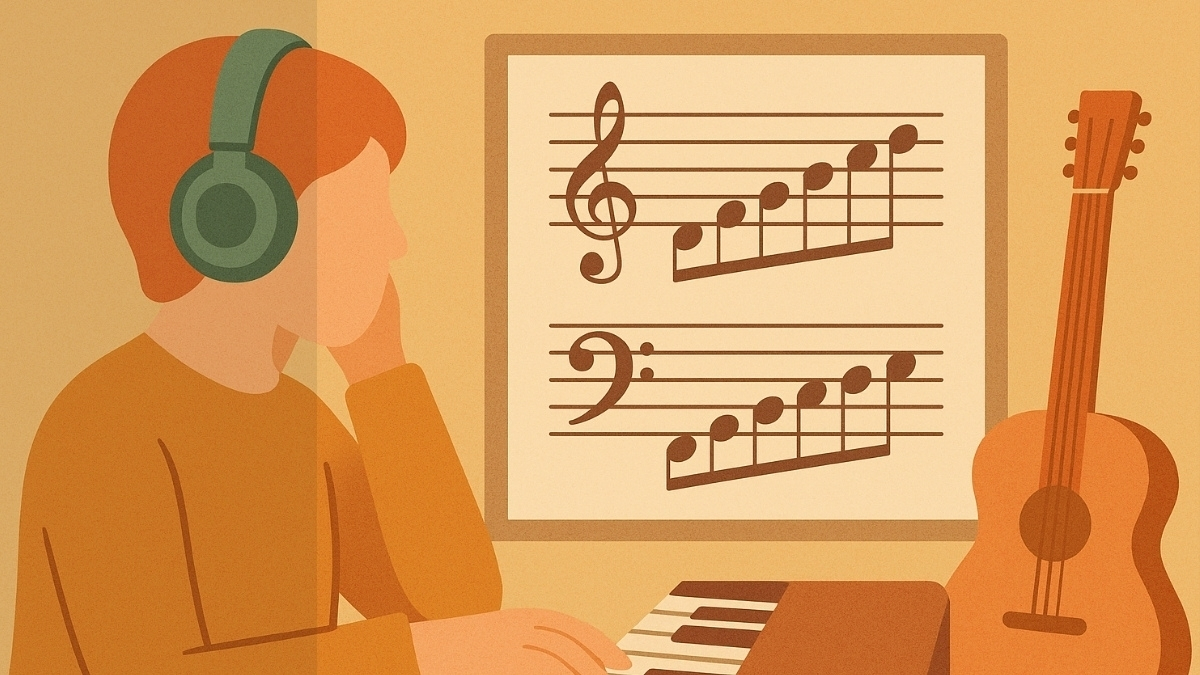April 3rd, 2025
What is Syncopation in Music? Enhancing Rhythm & Creativity in Your Compositions

Syncopation is frequently used In music and It is a crucial component in writing rhythms that move a track along and keep it interesting. But it can be challenging to understand how syncopation functions and how to use it effectively.
So your music sounds boring. You don’t even want to listen to yourself anymore. All of your beats or songs sound the same, you must just not have what it takes…
NONSENSE.
The only thing you’re missing is some syncopation, and in this article, we’re going to teach you everything you need to know to breathe new life into your production, songwriting, and beat-making.
What is Syncopation in Music?
Syncopation can be a bit tricky to describe without hearing it, so make sure to follow along with the examples provided, and check out the audio examples at the end!
To understand syncopation, we need to grasp two musical fundamentals.
1. Time Signatures
Time signatures are a method of dividing and understanding musical time. The most common time signature is 4/4, which you’re probably familiar with.
The top number represents how many beats belong in each measure, while the bottom number tells us which note value counts as one beat.
So in one measure of 4/4, there are four quarter notes (¼).
These notes are counted aloud as numbers: 1 - 2 - 3 - 4.
2. Strong Beats vs. Weak Beats
Now within each measure there are two “types” of beats: strong and weak.
Strong beats are typically emphasized, while weak beats are not.
The first beat in a measure is considered the strongest. This is because it typically contains the most musical information. Think about it, when the band starts to play and everybody enters, there are a lot of notes, hits, chords, riffs, or bass drops on that beat.
The third beat is also “strong” but less so. Beats two and four are “weak”, because they typically don’t receive as much emphasis.
So where does syncopation come into play? The keyword in the last sentence was TYPICALLY.
Just because our 4/4 measure contains four ¼ notes with strong beats on 1 and 3 and weak beats on 2 and 4, doesn’t mean we can only play or sing on those beats. In fact, we can break the rules and shift around the strong and weak beats altogether.
When we place a musical note, chord, or drum hit outside of this strict rhythmic framework, we begin introducing syncopation, and excitement!
4/4 vs. 3/4 Time
Another common time signature is 3/4 time. This time signature contains just three ¼ notes instead of four.
Therefore, beat 1 is strong, while beats 2 and 3 are weak.
Why is Syncopation Important?
Without syncopation, music becomes dull, boring, and robotic. Syncopation allows us to add dramatic effect, create/release tension, and foreshadow powerful chord changes, effects, or shifts in a song’s tone or even key.
Think of syncopation as another story-telling tool in your musical toolkit.
Types of Syncopation in Music
There are four main types of syncopation: Suspension, Missed-Beat, Even-Note, and Off-Beat. Each type creates a different feeling and effect.
Suspension Syncopation
Put simply, suspension syncopation sustains a weak beat over a strong beat, therefore “suspending” the strong beat that would normally follow.
Instead of playing on the ensuring strong beat, you let the weak beat wash over. This can be into the next strong beat or even into the next bar.
This is common in trap and hip-hop beats, where the 808 on the weak beat “4” will often roll over into the next measure.
Hear it here in A$AP Ferg’s “Floor Seats”:
Missed Beat Syncopation
Missed beat syncopation replaces a strong musical beat with a rest (silence). When used in a drum beat, the ensuing accent on the weak beat will sound extremely powerful. This is often used in reggae and dub music and called “drop-one”, because the strong beat “1” is not voiced or accented by the drummer.
This, along with other rhythmic techniques like polyrhythms, can be heard liberally in the music of the Police:
Missed beat syncopation tells us something important or dramatic is about to happen. Think of this gap over the strong beat as the stillness right before you drop from the top of a rollercoaster.
One great example of this is in “The Middle” by Jimmy Eat World:
In this song, the chorus slams in with a unison hit on beat 2 in the first bar, which is a weak beat. You’ll hear the entire band stop on beat 4 of the previous measure (also a weak beat) as the vocals carry through, then re-enter on the weak beat 2. This pause and eventual payoff is hugely rewarding to a listener, and a very exciting way to give life to your choruses.
The primary difference between suspension syncopation and missed beat syncopation is the use of the rest. In suspension syncopation, the syncopated note sustains over the strong beat, while in missed beat syncopation, that strong beat is replaced with a rest.
Even-Note Syncopation
In even-note syncopation, the even numbered weak beats (2 & 4) are stressed instead of the odd numbered strong beats (1 & 3). Hence the name “even-note”. This only works in even time signatures (duple meter) such as 4/4 and 2/4.
This technique is often used in electronic and dance music to give the music unparalleled pulse and energy. This effect can also be achieved using sidechaining.
Backbeat Syncopation
One sub-type of even-note syncopation would be backbeat syncopation.
In 4/4 time, beats 2 and 4 are known as the “backbeat”. This type of syncopation is practically synonymous with pop, rock, and RnB music, where people clap on weak beats 2 and 4, along with the snare drum.
However, before blues influenced music took over America in the 1950s, this was a total novelty!
Offbeat Syncopation
Offbeat syncopation takes things a step further by shifting the pulse away from ¼ notes. This is when things can get most excited (and complex). This part might require some more advanced musical counting skills. If you need to sharpen yours, play a few rounds of Rhythmania to make sure you’re in the groove!
A quarter note in 4/4 can be “subdivided” into shorter and shorter note durations. If we cut all of the notes in half, we get ⅛ notes, which are counted as “1 and 2 and 3 and 4 and”.
Usually a “+” is used instead of the word “and” when writing: 1 + 2 + 3 + 4 +.
If we emphasize a note or chord change/beat shift on one of these “off beats” we create… you guessed it! Offbeat syncopation.
Luckily, I have a VERY easily digestible example from Adele’s 2011 smash, “Rolling in the Deep”:
Producer Paul Epworth can be heard playing guitar during the song’s iconic intro, and uses offbeat syncopation in a very cool way. Instead of having the acoustic guitar chords change on beat 1, Epworth shifts the accent to the “and” of beat 1, giving the song a unique swagger.
Try counting along to the music video to internalize this feeling/sound for yourself.
Another way off beat syncopation is used ALL THE TIME in pop music is to “push” energy in a song’s chorus. When we “push”, we play what should be the “1” of the bar on the “and of 4” of the previous bar. Basically, we’re just playing the accent a half beat early. This is also called “anticipated”.
You can hear offbeat syncopated kickdrums in the chorus of “Positions” by Ariana Grande:
This shift in time is small enough that it doesn’t sound off time, but it definitely ramps up the energy when we want to achieve more motion in our sound.
“Swing feel”, most commonly heard in jazz music, is also a form of offbeat syncopation. In a swing feel, a group of two 1/8th notes is felt as one dotted 1/8th note and one 1/16th note. These notes take up the same amount of space as two 1/8th notes, but this slight re-distribution of the time gives the beat a unique swagger and push/pull.
Jimmy Eat World’s “The Middle”, which we discussed earlier, also has an example of off beat syncopation. The vocal melody of the chorus begins on the “+” of beat 3: Jimmy Eat World - The Middle (Official Music Video)
These are all examples of “beat level” syncopation, where the use of 1/8th note accents can shift the pulse of the beat foundationally.
There is a second type of offbeat syncopation known as “division level” syncopation, which is when accents are placed on even smaller subdivisions of the pulse, such as 16th and 32nd notes. These shifts are typically too small to foundationally transform the entire feel of the groove, but add rich and complex layers when used skillfully.
Learning more about syncopation and rhythms opens up limitless possibilities in your music making. Always follow your curiosity and keep your ears sharp. It may feel like a chore at first, but you’re reprogramming your entire musical mindset to be more diverse, playful, and innovative.



Comments:
May 06
Apr 19
Apr 03
Login to comment on this post